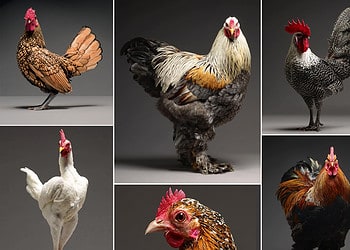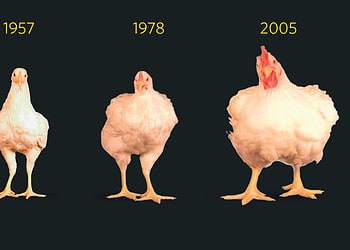Every year, around 7 billion male chicks are culled, often on a macerator on a conveyor belt. It’s an ugly practice, but the industry can’t get around it — in modern-day poultry farming, the layer males are useless: they cannot grow up to lay eggs and they’re not fast-growing breeds that can be sold as poultry.
It’s not just cruel, the practice is also expensive: hatcheries spend around $1 billion year incubating and dispoising of the male chicks. If there was a way to get rid of this problem, the industry would no doubt adopt it — and such a solution might be just around the corner.

Counting your chickens before they hatch
The goal is pretty straightforward: find a way to separate the male chicks before they hatch, and you wouldn’t need to slaughter them a few days later. But how do you go about it? As Timothy Kurt, a director from the United States Department of Agriculture, put it, “Everyone wants the same thing, and the right piece of technology could solve this right now.”
An approach would be to measure the eggs (through some form of imaging or chemical tests) and determine a chick’s sex before hatching. Another option, potentially even more appealing, is genetic engineering to make male eggs fluorescent.
Pioneering research from the Australia’s Commonwealth Scientific and Industrial Research Organisation (CSIRO) showed that an innovative solution involving lasers can work. The idea is to use revolutionary “genetic scissors” known as CRISPR and create a glowing egg. By shining a laser on the egg, they can reveal the sex of a chicken on the same day it’s laid, which is more efficient than waiting a few days.
Another company working on the problem, eggXYt, came up with a similar CRISPR approach that allows imaging the eggs before they hatch. They believe the practice is not just humane, but also cost effective.
“The beauty of eggXYt’s solution is that it is addressing an animal welfare crisis while creating value for the egg industry,” a press representative tells me. “eggXYt’s solution gives hatcheries a way to identify the sex of the chick before incubation, thereby allowing them to save on all of these costs. In addition to the cost savings, we’re also creating two new revenue streams for hatcheries. The first is from the sale of unincubated male eggs, which can be used in a host of industries that already use eggs in their production (such as cosmetics, tannery, glue, and pharma).”
“We also believe that “chick culling free” eggs will be sold for a premium at supermarkets (similar to cage free and organic eggs today). These premiums will be passed up the value chain as well,” the company repreentative added.
The idea seems like a win-win for all parties involved, and there is some political traction for it as well. The United Egg Producers, a U.S. cooperative, says it wants to be cull-free by 2020, and the German government has said it will outlaw the practice. But there’s a serious problem with this: it means adding a gene-edited organism into our food chain.
Public opposition against genetically modified organisms (GMOs) is not a mystery to anyone. Despite scientific evidence which claims that GMOs can be safe and healthy, the mere mention of eating a GMO would
But Mark Tizard, a geneticist at the Australian Animal Health Laboratory in Geelong, who is also working on the technology, told Science that consumers in North America and Australia might accept it. The key is that they wouldn’t actually be eating the genetically modified organisms: the CRISPR technology would only affect the male chicks, and neither the layer hens nor the eggs sold for consumption would contain modified genes.
Several other approaches are used. For instance, one study in Turkey attempted to differentiate between male and female eggs based on their shape, but results are still not entirely clear. A genetic approach would be elegant and efficient, but whether it will ultimately become acceptable is a different story.
Consumers also have historically low confidence in the meat industry, in large part due to its history of hiding its more unglamorous aspects, which could be a factor. Ultimately though, consumers will have a choice between accepting a genetic technology or continuing to condemn billions of male chicks.
The people at eggXYt seem confident in the technology’s potential to transform the industry. It’s already happening, they explain.
“We have formed strong partnerships with industry-leading companies to make our technology globally available and work is underway. This value creation model creates strong financial incentives for the industry to adopt our solution, in addition to the clear animal welfare benefits. “
For now, the jury is out.






